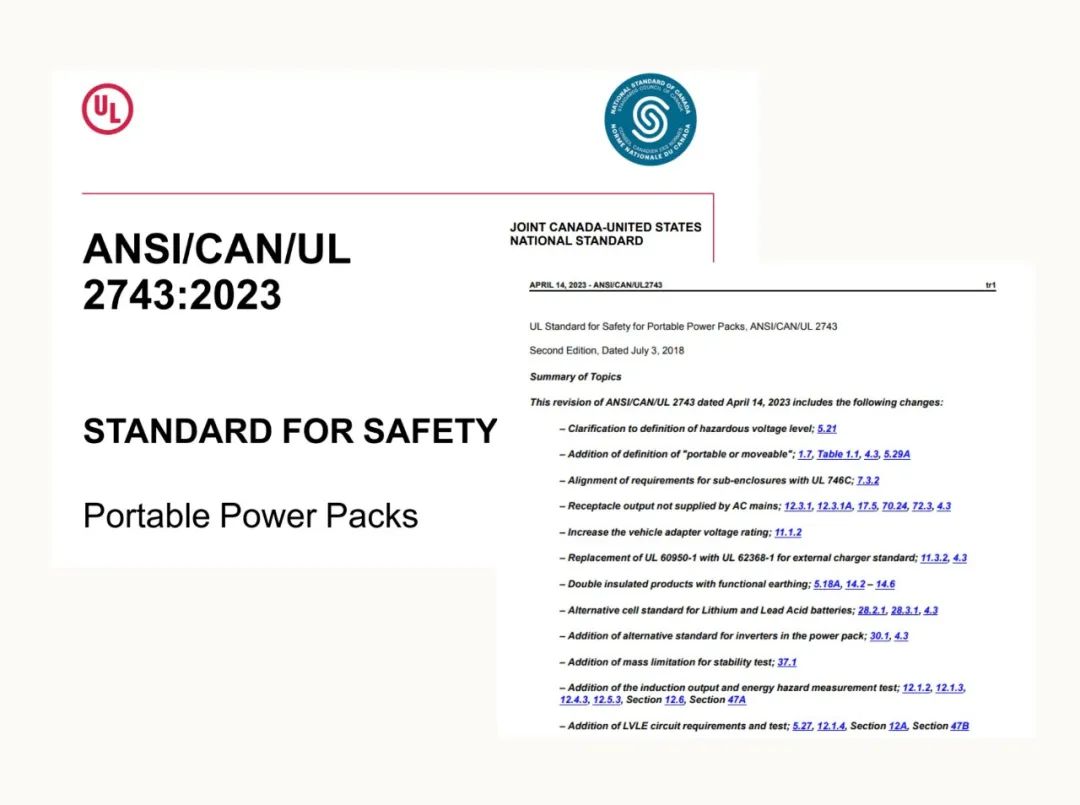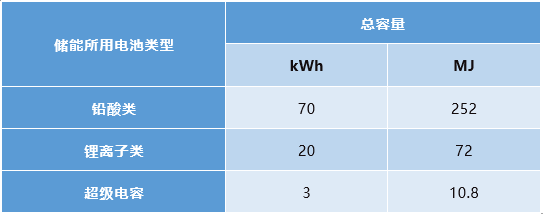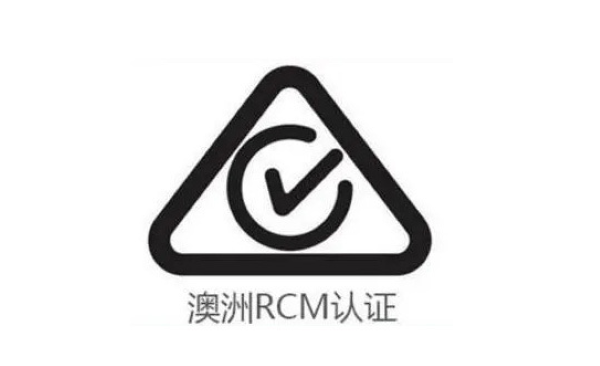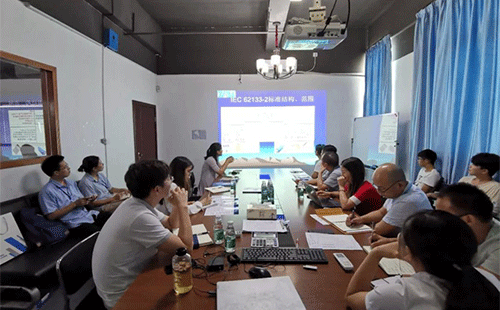On April 14, 2023, the American National Standards Institute (ANSI) and the Standards Council of Canada (SCC) released ANSI/CAN/UL 2743:2023, a safety standard for mobile energy storage. This new edition is an important revision of UL 2743:2018 and UL 2743:2020 and includes a series of standard optimizations.

The main updates are as follows:
✦ Redefine dangerous voltage limits for your man (for products you are using indoors, the safe voltage limit is increased to 42.4Vpk or 60Vdc; Maintain the previous limits of 21.2Vpk or 30VDC for outdoor products or temporary outdoor products).
✦ Show a man that the maximum capacity UL2743 is applicable and that products that are above that limit are transferred to UL 9540:

✦ New definitions follow that man, introducing the concept of 18kg. For non-fixed installation equipment, the equipment: weighs less than 18kg, or provides a device that is easy to move, can be classified as a mobile energy storage product.
✦ Follow an evaluation standard for an AC outlet other than a 15A non-grounded outlet (including UL 1012- An overcurrent protection requirement for an AC outlet and other related requirements).
✦ New requirements for functional ground for a dual insulating isolation product (including structure and identification requirements) are in place.
✦ The charging voltage range for your car expanded to support a rated input of 24V (the old standard only supported 12V).
✦ Increase your options for complying with standards for a lithium cell or lead-acid battery (for example, for a lithium cell, follow any of the standards UL 1642, UL 62133, UL 1973 or UL 2580).
✦ Improve your test method for leaking current by adding a test requirement for ports that vary from dangerous voltage to safe voltage (for example, between the AC port of an inverter and the low voltage terminal).
✦ Evaluate critical safety circuits by adding a single failure of a component as an alternative option for UL 60730-1.
✦ Increase your requirement for a failure test for a lithium battery pack that is larger than 1kWh (see UL 1973's thermal diffusion test method for a single cell).
✦ Change your requirement for dropping tests: fall once for products that are more than 18kg and drop 0.9m three times for products that are less than 18kg.
✦ Optimize a test method for starting output in an emergency and identify the requirements (current and duration).
✦ Improve your requirements for a warning and instructions.
Energy storage power UL 2743 certification test project
1. Power input test;
2. Normal charging operation test;
3. Lithium charging system test;
4, capacitance discharge test;
5. Leakage current test;
6. Normal temperature test;
7, insulation pressure test;
8. Leakage current under humidity regulation;
9. Abnormal operation test;
10, vibration test;
11. Ground connectivity;
12. Overload test;
13. Stress relief test;
14, shell strength test.
Energy storage power UL 2743 Certification application documents
1. English instruction manual
2. Specifications
3. Schematic diagram of circuit
4. PCB board drawing
5. Nameplate
6. Application Form
7. Specifications of key components
8. List of key components and certificates
Energy storage power UL 2743 Report procedures
1. Fill out the application form
2. The applicant shall submit product information
3. The applicant confirms the quotation and provides samples
4. Arrange product testing
5. Test passed and report completed
6. Issue UL test report upon completion of the project
Warm tips
ZRLK 18 years focus on battery products testing and certification, always pay attention to the changes in national regulations, to provide customers with one-stop testing and certification services, to ensure that your products quickly enter the target market. If you want to know more about the battery/battery product testing and certification requirements or battery/battery products need to handle related testing and certification, please feel free to contact us, our engineers will be the first time to serve you!












